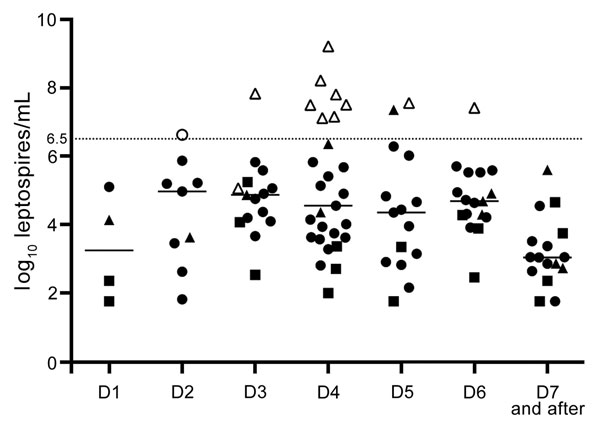Volume 21, Number 12—December 2015
Dispatch
Factors Associated with Severe Leptospirosis, Martinique, 2010–2013
Figure 1

Figure 1. Leptospiremia in 102 patients with quantitative PCR–confirmed leptospirosis and day of sample collection since symptom onset, Martinique, 2010–2013. Each symbol (triangle, circle, or square) represents the leptospiremia of 1 leptospirosis patient on the day when the sample was collected. D indicates day since symptom onset. Open symbols indicate severe cases; closed symbols indicate nonsevere cases. Triangles correspond to Leptospira interrogans species, circles to other identified species, and squares to cases without genomic identification. Dotted line indicates the threshold for severe diseases determined by receiver operating characteristic curve analysis.
Page created: November 17, 2015
Page updated: November 17, 2015
Page reviewed: November 17, 2015
The conclusions, findings, and opinions expressed by authors contributing to this journal do not necessarily reflect the official position of the U.S. Department of Health and Human Services, the Public Health Service, the Centers for Disease Control and Prevention, or the authors' affiliated institutions. Use of trade names is for identification only and does not imply endorsement by any of the groups named above.